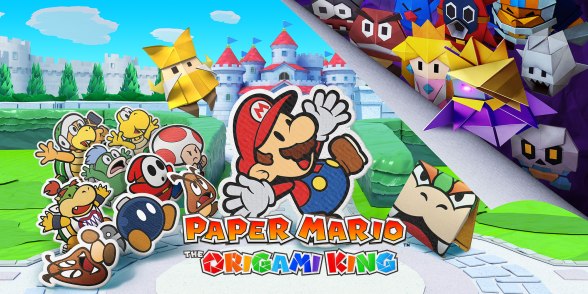Mario Mario is a man who wears a lot of hats, figuratively and probably literally as well. In his resume you can find many professions such as plumber, tennis player, party host, entertainer, dinosaur mother, professional go kart driver, doctor, cat and even astronaut. In the year 2000 he added another job to his linkedIn profile – this time he was paper. Mr. Mario became a paper boy living in a paper world leading to the creation of a franchise that has a amassed a cult following which kept it alive through the years even though “All games after the first one sucked.” – Pr0GamerZ89. Now, 20 years later, Mario becomes a paper boy again and goes on a brand new adventure that adds unseen dimensions to the paper world. This is Paper Mario: The Origami King.

Let’s start by asking a question: What is Paper Mario? Paper Mario is the rare RPG spin-off in the Mario series, that presents some of the more interesting settings and stories in the Mushroom Kingdom to be explored. It has quests, funny dialogue, cool dungeons, exciting side kicks and it looks absolutely charming. At the same time it’s simplistic enough that even those who usually don’t like RPGs for the menu management or complicated turn-based battles can take a liking to it. It has something for everyone and has the potential to draw in “core” as well as “casual” video game friends. That has been the case for the first Paper Mario and it is still true for the Origami King.
The Story
In this new tale, Mario has to save his biggest rival, Bowser, and emotionally support him being a single father to a son who has his own army and a flying car. Meanwhile, Princess Peach has seemingly been brainwashed and folded up multiple times over by the fabled Origami King and abducted with her whole castle in tow. The Mushroom Kingdom is then overrun by the King’s folded soldiers who ravage the land, cause havoc and really, really hate Toads. It is now on Mario and the King’s sister, Olivia, who detests her brother’s vile and evil actions, to travel the land and restore peace while they unravel the princesses’ castle which has been wrapped in paper streamers that are spread out across the Mushroom Kingdom. On their journey they meet new friends, battle the folded soldiers and solve puzzles to confront the elemental Vellumentals; powerful origami deities, with impressive themed powers that the flat tandem needs to put a stop to the King’s plan. It truly is a long path that Mario and Olivia embark on. On foot by the way, because Luigi took the car. What a great brother he is. It’s a typical Mario story that is charming enough to be remembered but only serves as a vehicle for the gameplay.
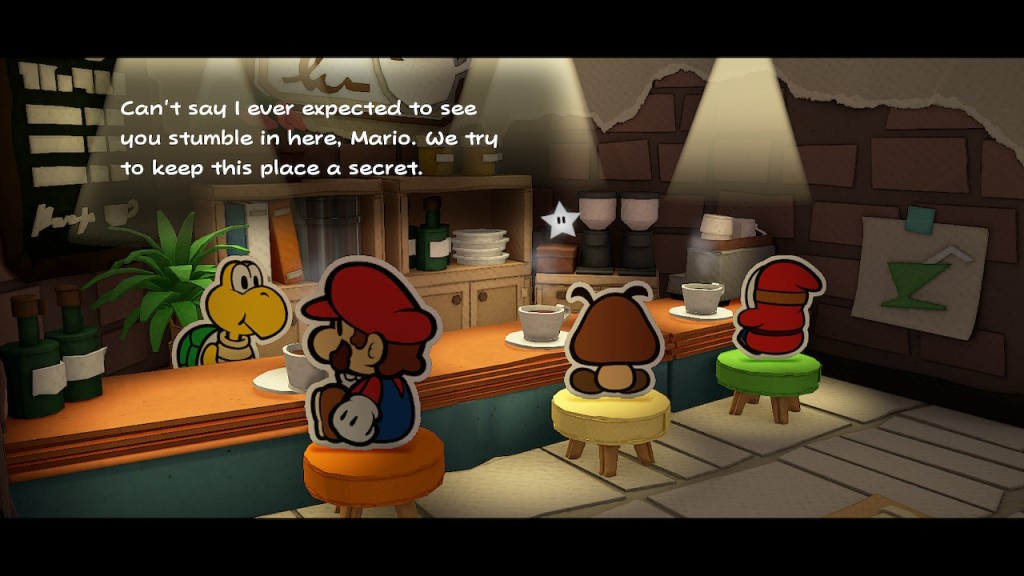
The Gameplay
Paper Mario: The Origami King is not the usual Super Mario game, it’s not even the same genre. As mentioned before, it is an RPG, a role-playing game, that has Mario carry multiple weapons, fight along sidekicks and were “combat” doesn’t just mean jumping on a foe’s head. Most enemy encounters are turn-based battles which are the unique selling point of the game. For many RPG enthusiasts the combat can make or break a game. Paper Mario turns a new page in the creative RPG combat rule book. The battles are still turn based, however, the protagonist and his foes are not standing face to face, ready to engage in an epic showdown. In most fights, the foes gang up on Mario and surround him from all directions. That’s what he gets for stomping on them for decades!
The battle field becomes a disc with four rows that can be rotated to the sides or slid in and out. Foes have a designated spot they stand on and this is where strategy comes into play because aside from the tutorial, it is not always obvious how to align the enemy perfectly in order to deal the most damage in the limited time you have. The player phase does have a time limit adding to the already unusual task at hand to rubik’s cube the enemies into correct positions for Mario to jump on, hammer down or tail wiggle away. It can sometimes get quite stressful to make the correct move because every round can cost you time and coins. On the other hand, with every battle you get coins and that also leads me into the next big topic which is the leveling system.
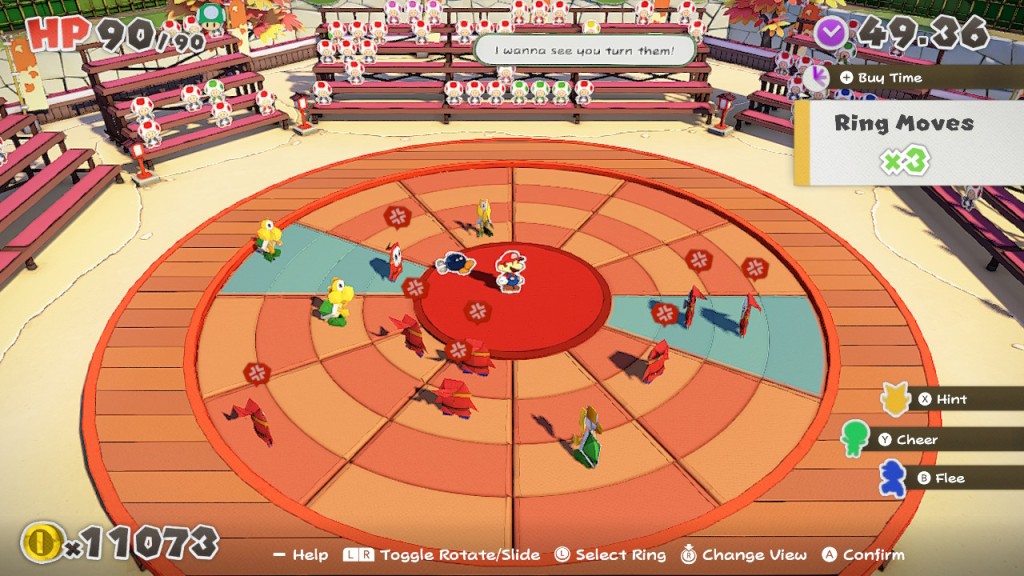
It doesn’t exist. There is no leveling system. It’s an odd thing to consider because it makes battle feel very optional and sometimes even best avoided.
Usually, when you enter a battle in a game like this, you gain XP to become stronger overall. You pay for XP with time and resources like weapons, healing items and coins. In The Origami King, you still pay all these things but you don’t get anything in return except for coins, if it weren’t for the fact that the game encourages you to spend coins mid-battle to extend your time limit or summon a round of Toads for help. In the end, often enough when one of Bowser’s minions jump you, you tend to run away instead because it’s just not worth it. You might even end up with less coins than you had before despite a clear victory.
Luckily, the boss battles are different. Instead of being surrounded by enemies, bosses are in the middle of the duel disc with Mario on the outside layer, making his way to the big evil. Again you are limited in time but once you get the hang of it, time becomes purely secondary because you want to figure out the fastest and most efficient way to deal damage. On the rows are fields that you pass over which cause different actions like attack, gain health, change direction or activate a special move. It’s a whole different story to usual battles and it’s fun. The boss battles are engaging, quirky and while still the same at the core, bring different elements to them that differentiate them from all other battles in the game.
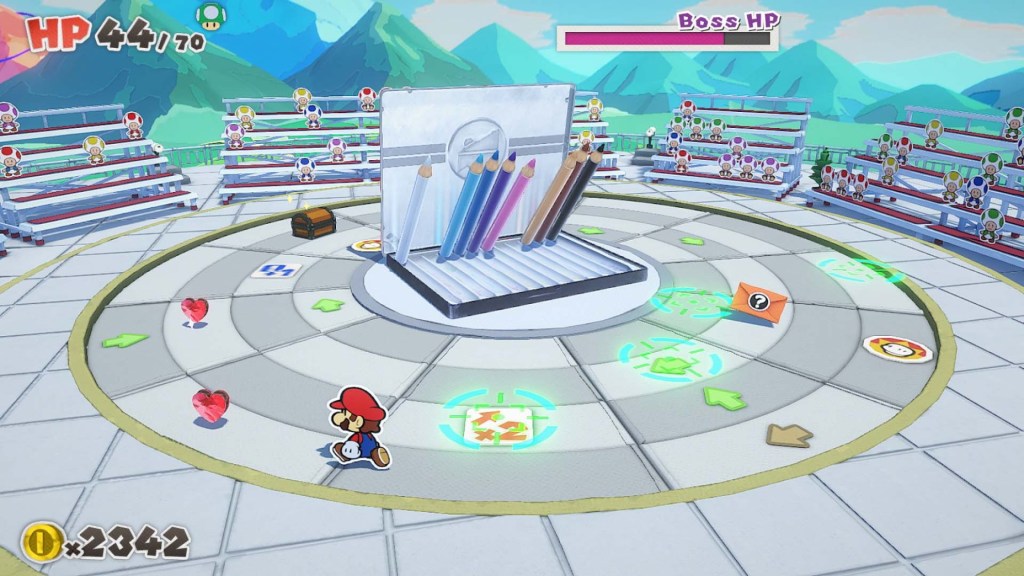
Outside of combat, the most fun is to be had with rescuing Toads. These poor little fellas were abducted by the folded soldiers and thrown into various predicaments ranging from being stuck in a fax machine, made into a paper swan, turned into butterflies to even being beheaded and buried alive. You wish it was a joke but no, that last one is real. The poor guy is certainly traumatized for life. You can find the many Toads very easily around the vast open world. In past Paper Mario entries, the game was divided by chapters that lead you from location to location – in this one you are encouraged to explore it to your hearts content.

This open world is another strong point of the game. No matter when or where you look on your screen, there is always something to do. Even in the distance you can already see potential Toad locations or a little puzzle, a surprise enemy or someone to talk to. It never feels too big or loaded but always busy enough to keep you engaged. Putting the game down for a second becomes harder the longer you play because you notice more and more over time and even though you really need to stop playing now, a little voice in your head goes “Alright, just one more Toad, he’s just a couple of steps away and then I – oh, there’s another one!”
Apart from searching for Toads, the origamified Kingdom draws your attention with big black open holes. These holes can be on the ground, on the walls and even other locations needing to be filled with a mechanic new to the Paper Mario series – Confetti. Our favorite plumber carries a bag of confetti with him that he uses to fill these holes restoring what was once there and got torn up by the folded soldiers. It’s a nice hobby to have on the side because you rarely ever lack confetti and the black holes stand out so much, you can’t miss them. Confetti’s another creative way to draw attention to the world around you and appreciate the art style. Personally, I really enjoyed traversing paper Mushroom Kingdom and the different locations in it a lot. But when it all comes together, does it justify the game?

The Verdict
This game is not like other Paper Mario games in the past and that might be a good thing. Until this day, all other Paper Mario games are still compared to the very first iteration. Be it nostalgia or something else like a gameplay mechanic that felt forced or uncreative they usually score worse than the OG. This will probably happen to The Origami King as well. However subjectively, the 2020 Paper Mario is just different enough that comparisons to the first game are not the way to go. Standalone it’s a fun and complete game. If I had to describe it with one word, said word would be pleasant.
Not necessarily a word that comes to mind when playing video games but this is exactly how it felt while playing. It’s fun to look at, everything plays smoothly and wherever you look on your screen, there is always something to do. The game doesn’t leave you behind bored or exhausted because it balances action, adventure and fun so well. Toad locations range from very obvious to a little tricky but are never too complicated. There is a certain ease in the presentation drawing you in and refusing to let you go until you find that last Toad you couldn’t figure out how to get a few minutes earlier.
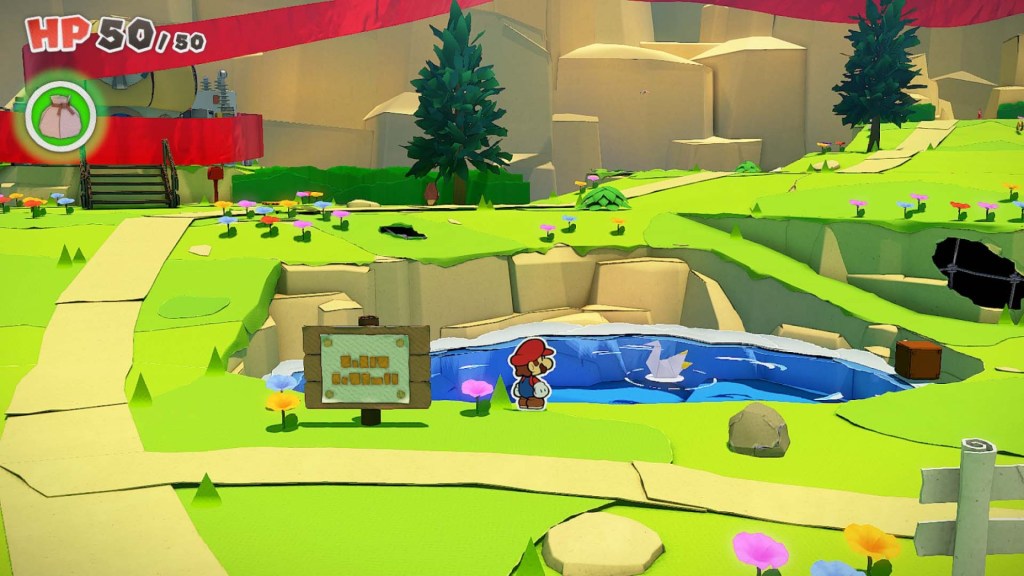
There are obvious downsides present, like the lack of a leveling system or the seemingly redundant if not obsolete combat against the folded soldiers but they don’t take away much from the experience as a whole.
Like origami, Paper Mario: The Origami King unfolds what an RPG is and folds it into a creative crane that is just different enough to still be recognized as such. It will certainly not be everyone’s cup of tea but it won’t let those down that are up for some paper action and good dialogues, filled with puns about paper that make it worthy of a recommendation.


